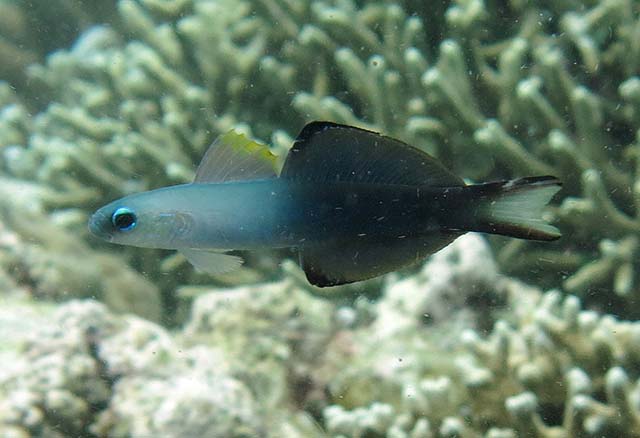| Microdesmidae (Wormfishes), subfamily: Ptereleotrinae |
| 14 cm TL (male/unsexed) |
|
reef-associated; marine; depth range 0 - 30 m |
| Indo-Pacific: Red Sea and East Africa (Ref. 2798) to the Line and Society islands, north to the Ryukyu and Ogasawara islands, south to New South Wales, Lord Howe Island, and Rapa. |
|
Dorsal spines (total): 7-7; Dorsal soft rays (total): 23-26; Anal spines: 1-1; Anal soft rays: 23-26; Vertebrae: 26-26. Light bluish gray in life, shading posteriorly to black; snout blackish; operculum with iridescent blue markings. Chin with a low fleshy protuberance, narrowing posteriorly to a low longitudinal fold. Caudal fin lobes blackish to dark reddish, broad centro-posterior region of fin whitish to yellowish; 1st dorsal fin dull orangish; 2nd dorsal and anal fins largely blackish; pectoral base with an orange to orange-red bar edged in blue. Juveniles with an oval black spot larger than eye at lower base of caudal fin. |
| Occurs in outer reef slopes, also inhabits lagoons and bays. Usually in pairs as adults and in small aggregations as juveniles, Ref. 48637. Monogamous (Ref. 52884). Feeds on zooplankton while hovering 1 to 2 m above the bottom. Swims away from danger rather than retreat to its burrow. |
|
Least Concern (LC); Date assessed: 12 March 2015 Ref. (130435)
|
| harmless |
Source and more info: www.fishbase.org. For personal, classroom, and other internal use only. Not for publication.

